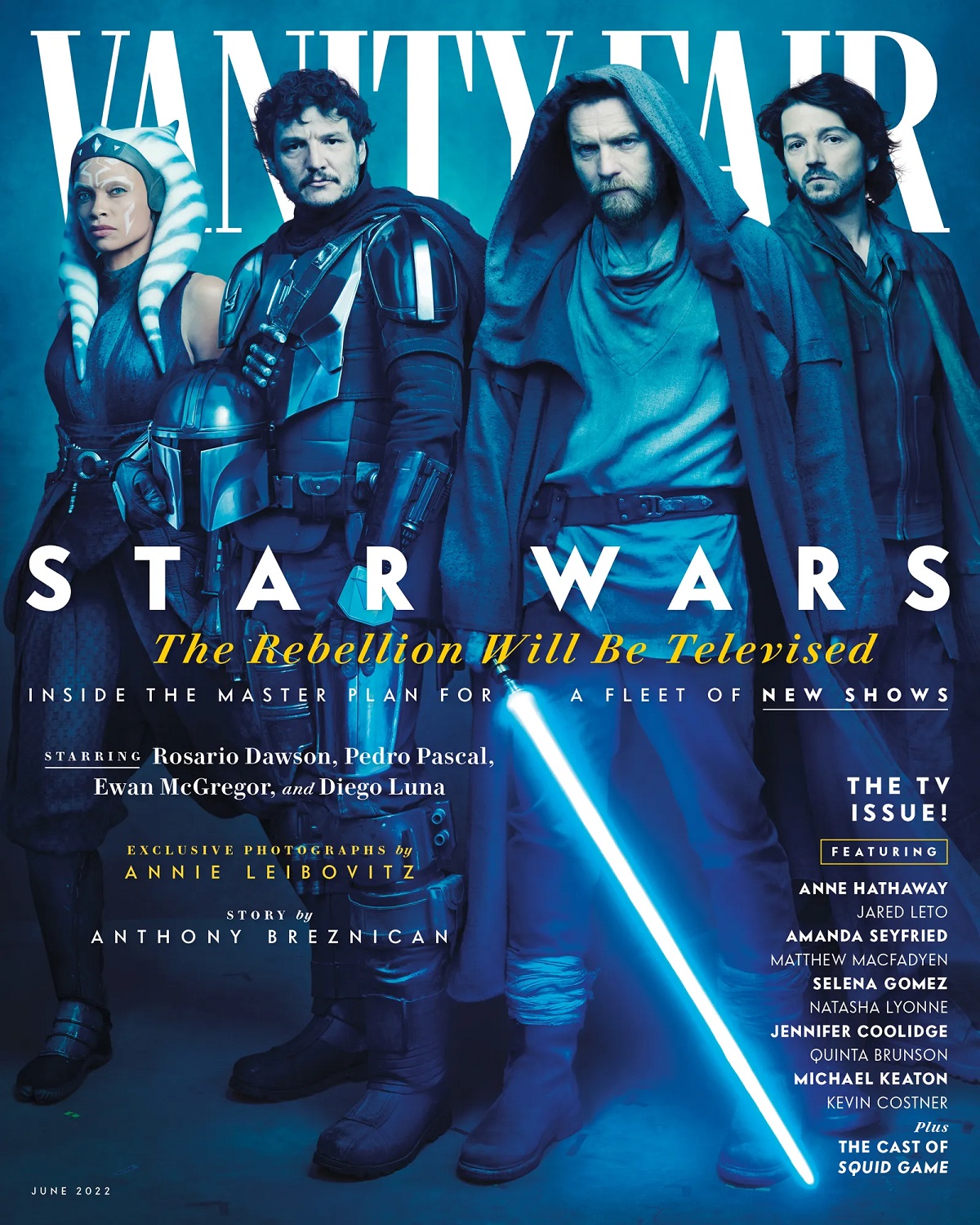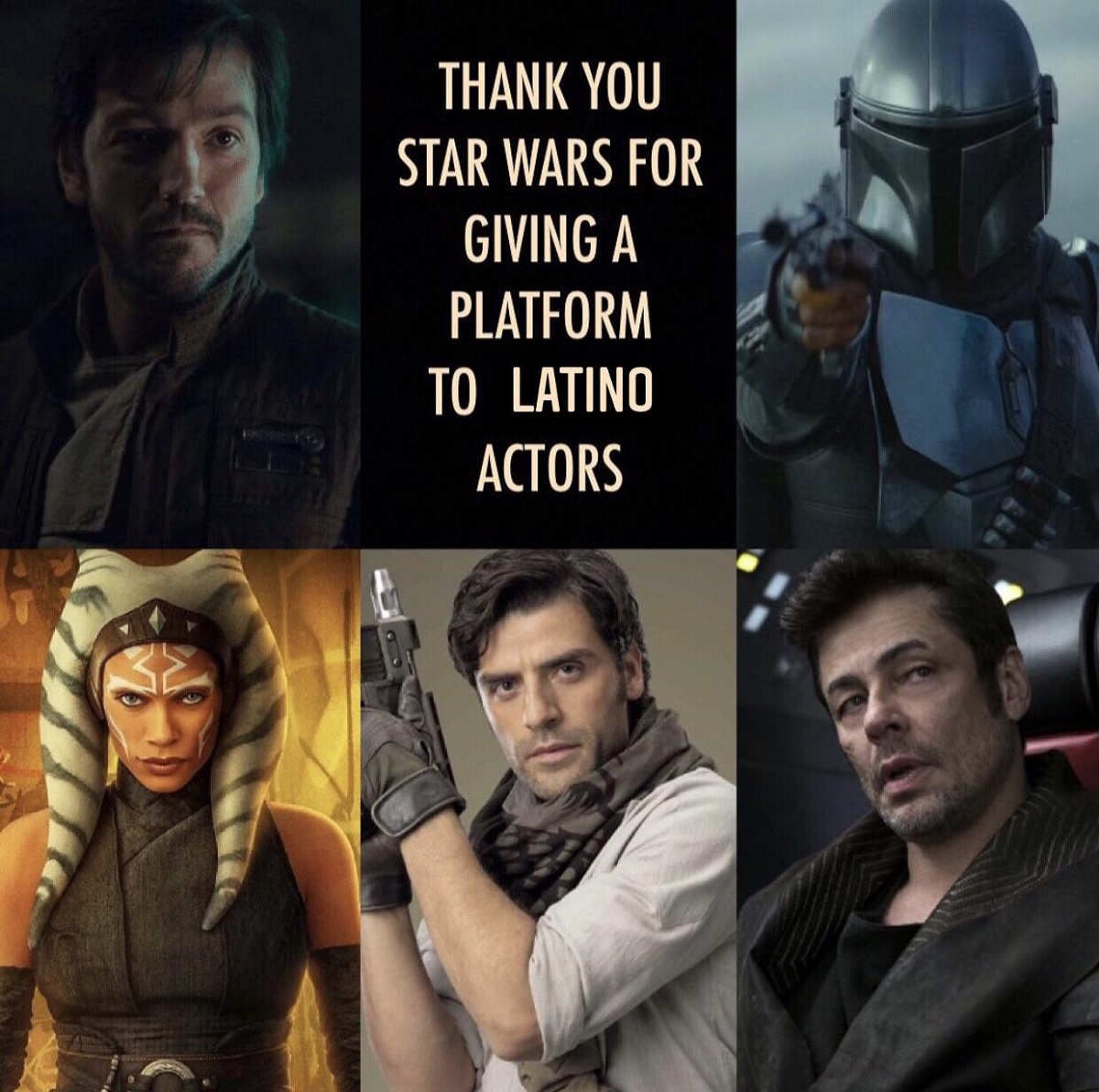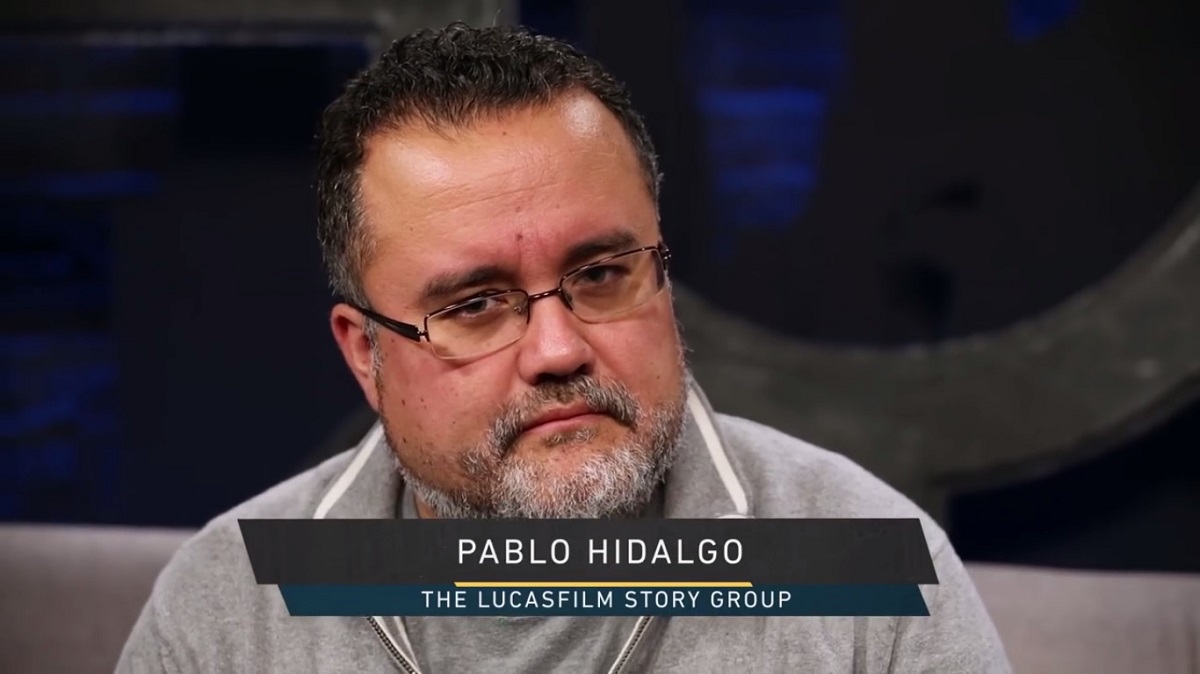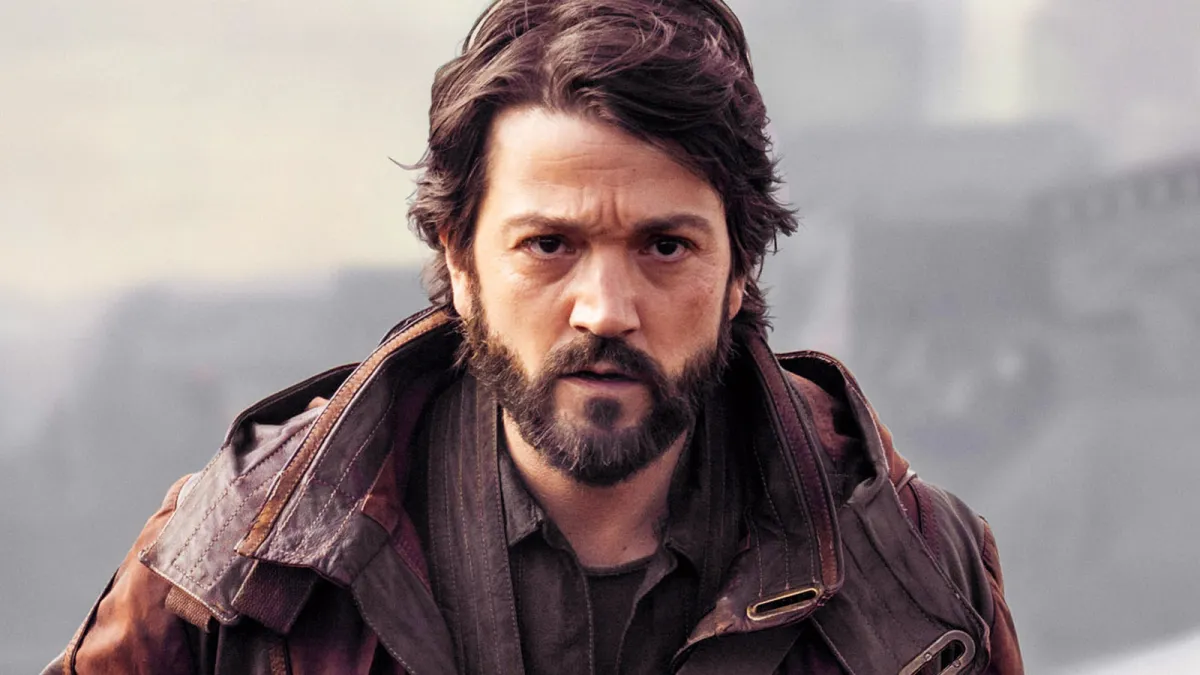When I first saw this 2022 Vanity Fair cover, I was excited as a Star Wars fan. Then, as I really looked at it, I got excited as a Latina Star Wars fan. Three-quarters of the actors on this cover are Latine (with Ewan McGregor holding it down for gringos)! Each of them is the protagonist of their own show. Star Wars isn’t only giving us “more Latine characters.” Star Wars is giving us Latine leads and entrusting Latines with creative control.

The power of lead actors
That Pedro Pascal, Rosario Dawson, and Diego Luna play the lead characters in their shows means more money and influence for each. The longer the show lasts, the more they receive. Lead actors on long-running series often become producers, helping to shape the narrative and other creative decisions since they know their characters, the show, and the world better than most.
Luna came on as an executive producer on Andor, so he’s had input on everything. Having a Latino in that role who was born and raised in Mexico and speaks English in a gorgeous accent is hugely exciting, because it’s a POV that isn’t often reflected from positions of power in Hollywood.
Luna’s impact is described in this 2022 profile in GQ, where he and Andor creator Tony Gilroy discuss his contributions:
“We’re not here for the fireworks,” [Luna] says. “We’re still telling very intimate stories and character-driven journeys. I like to be able to have that texture in a universe like this.” Luna connected Cassian’s refugee status to the forced migration he sees happening all around the world. (As a child, Andor’s home world gets destroyed by the Empire.) […]
Of course, finding and holding onto space for artistry inside the vast bureaucracy of the Star Wars machine isn’t exactly easy. […] With Luna, that stubborn insistence on storytelling and heart trickled down through the rest of the Andor cast. Tony Gilroy, the series’ creator, tells me that “the personality, leadership skills, grace, and empathy of the person that occupies number one on the call sheet has an incredible effect on a show.” In Luna, he found that he “could not have a better number one.”
While Dawson and Pascal aren’t credited producers on their shows, I’m sure that if Din Djarin or Ahsoka Tano have suggestions, they’re taken seriously. Their influence as “number one on the call sheet*” has an impact beyond their performances, contributing to the quality and perspective of the stories we receive.

Meanwhile, it’s wonderful to see Latine actors playing nuanced supporting roles in Star Wars, like Oscar Isaac as Poe Dameron or Adria Arjona as Bix. You can check out a more comprehensive list of Star Wars Latine actors over at MITÚ. But Latine characters shouldn’t only be created to round out the story of a gringo protagonist.
Stories from the POV of Latine leads force viewers to pay attention to someone who might be different from them. You can’t turn away from or ignore a main character. Supporting characters, no matter how compelling, exist to serve the protagonist’s central journey.
Latine leads beyond film and television
Star Wars Outlaws is an upcoming open-world, narrative-based game featuring the first Latina lead in a Star Wars game. Maybe the first in any game? Check my math. Outlaws protagonist Kay Vess (Humberly González) is “a scoundrel seeking freedom and the means to start a new life, along with her companion Nix.”
As is the case in TV and film, being the lead playable character in a video game is important beyond “allowing Latines to see themselves.” First, it’s a major life-changing opportunity for a Latina actor. Not only does it affect her paycheck, but games take years to make and often lead to sequels and spin-offs. Being a video game lead can mean a career that spans decades if the title is successful.
And being the lead playable character forces players to see the world through that character’s POV. When a game has a selection of playable characters to choose from, some of which are Latine, it’s less impactful than if players have to play a Latina to play the game at all.
Other Latine creatives in Star Wars

Right now, we’re seeing the most representation among actors in Star Wars which, as I discussed above, translates to concrete positive change in the lives of Latines in the wider world. However, we’ve also seen Latines at all levels and mediums of the franchise, above and below the line**.
Robert Rodriguez, director of pulpy fare like Machete and family-friendly fare like Spy Kids, is the first Latine live-action director in the Star Wars universe. He’s also gotten to play in the Star Wars universe as a voice actor on Boba Fett, playing crime boss Dokk Strassi and Mos Espa mayor Mok Shaiz.
The importance of hiring Latine directors can’t be overstated, as they function as the primary filter through which all other creative decisions pass. Rodriguez entered the franchise via The Mandalorian, directing “Chapter 14: The Tragedy.” He followed up by directing the first four episodes and episode seven of The Book of Boba Fett. And he’s not alone.
Some other notable Latine creatives in Star Wars:
- Saul Ruiz (director/animator): Ruiz’s Star Wars animation career started as a 3D story artist on The Clone Wars and as an animator on the LucasArts games Star Wars: The Force Unleashed II and Lucidity. He then moved into directing episodic animation, directing episodes of Star Wars: Rebels and The Bad Batch. Animated series have provided some of the best Star Wars stories, so I love that there’s Latine artistry in that mix.
- Nathaniel Villanueva (director/animator): this storyboard artist and director has worked on Star Wars Rebels and Star Wars Resistance, along with Star Wars: The Clone Wars.
- Lin-Manuel Miranda (composer): the Tony-winning In the Heights and Hamilton creator wrote the song “Jabba Flow” for The Force Awakens. This video of Miranda and J.J. Abrams premiering the song on Star Wars Day during “Ham4Ham” on Broadway always makes my geeky heart sing.
- Daniel José Older (writer): author of Star Wars novel Last Shot: A Han and Lando Novel and editor of the anthology Star Wars From a Certain Point of View, Older is also a story architect for Star Wars: The High Republic. In addition to helping shape this setting’s narrative across multiple mediums, he’s also written High Republic prose novels and comics series for IDW and Dark Horse. An entire area of Star Wars lore has a Latine perspective in its DNA. I’m here for it.
- Zoraida Córdova (writer): Córdova has written prose stories for anthologies including Star Wars From a Certain Point of View; Star Wars From a Certain Point of View: The Empire Strikes Back; the Clone Wars-themed anthology, Stories of Light and Dark; and the YA High Republic anthology, Tales of Light and Life. She’s also written a Galaxy’s Edge YA novel, A Crash of Fate, and she’s the author of the upcoming High Republic novel, Convergence.
- Carlos Meglia (comic artist): though the Argentinian artist passed away in 2008, his impact was felt on a variety of Star Wars comics. These include the limited series Underworld: The Yavin Vassilika and a story in the comics anthology Star Wars Tales 5 titled “Lando’s Commandos: On Eagles’ Wings.”

This list wouldn’t be complete without Pablo Hidalgo, who has one of the best fan-to-creator stories ever. He absorbed tons of Star Wars lore through RPGs he played in his youth, which translated to him creating the Star Wars Index in the 1990s, the first large-scale online database of Star Wars knowledge. This led to him assisting Lucasfilm Director of Content Management Steve Sansweet in fact-checking 1997’s Star Wars Encyclopedia. Sansweet later put Hidalgo in charge of StarWars.com, and Hidalgo rose up the ranks joining the Lucasfilm Story Group. He is currently a creative executive and Star Wars Lore Advisor, consulting on all the franchise’s films, shows, games, and books.
Latines are still underrepresented across all Hollywood positions. And when they are employed, the roles are often problematic, or there are issues of colorism. Dawson, for example, is the only Star Wars Afro-Latine casting so far, and there haven’t been any Indigenous Latine actors in the franchise that I know of.
Still, Star Wars is making the kind of effort that I wish more Hollywood projects would.
*Call sheet = daily shooting schedule. Actors are listed numerically according to how much shooting they’re in. The star is always number one.
**“The line” separates where expenses appear on a budget. “Above the line:” those involved in creative development (writers, producers, directors, main cast, and casting) and paid a negotiated fee. “Below the line” are crew hired for day-to-day production, from pre-production (camera, sound, production design, etc) through post-production (editors, VFX, etc), and paid an hourly rate.
(featured image: Walt Disney Studios Motion Pictures)









Published: Jul 2, 2023 03:23 pm